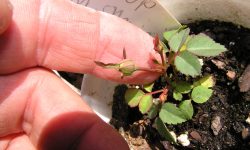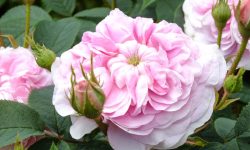Bromeliads are among the most fascinating tropical plants you can grow indoors or in the garden. Their unique rosette shapes, vibrant flowers, and ability to thrive with minimal care make them a favorite for plant lovers of all experience levels. While their exotic appearance might seem intimidating at first, bromeliads are surprisingly easy to care for once you understand their basic needs. This guide will help you learn how to keep your bromeliad healthy, colorful, and flourishing year-round.
Understanding the Bromeliad Family

Before diving into care instructions, it’s important to recognize the diversity within the bromeliad family. The Bromeliaceae family contains over 3,000 species, including popular genera like Guzmania, Aechmea, Tillandsia, and Neoregelia. Each type may vary slightly in care preferences, but they all share key characteristics that make their maintenance relatively similar. Most bromeliads grow from a central rosette and produce a long-lasting flower spike. Once the flower fades, the mother plant eventually dies, but not before producing pups—baby bromeliads that can be replanted.
Choosing the Right Location
Light is one of the most important factors for bromeliad health. While they originate from tropical forests and often grow under canopy trees, many bromeliads thrive in bright, indirect light. Placing your bromeliad near a sunny window that receives filtered light is ideal. Too much direct sun can scorch the leaves, especially in thin-leaved varieties like Guzmania. On the other hand, insufficient light will result in faded colors and slow growth.
If you are growing bromeliads outdoors, ensure they are positioned in partial shade or a spot where morning sun is followed by afternoon protection. In very hot or dry climates, a shaded patio or greenhouse environment is best.
Ideal Temperature and Humidity Conditions
Bromeliads prefer warm, humid environments. Most varieties do best in temperatures between 65°F and 80°F. They can tolerate brief drops in temperature but should be protected from frost. If your indoor environment tends to be dry, especially during winter, using a humidifier or misting the plant regularly can help. Bathrooms and kitchens, which typically have higher humidity levels, are also great locations for these tropical plants.
Air circulation is another key element of bromeliad care. In their natural habitat, these plants benefit from constant airflow. Indoors, this can be achieved by opening windows occasionally or placing a fan nearby. Avoid placing bromeliads in completely closed-off spaces with stale air, as this can promote disease.
Watering a Bromeliad Correctly
One of the most unique aspects of bromeliad care is how they store water. Many bromeliads are tank-type, meaning they collect and hold water in the central cup formed by their rosette of leaves. For these varieties, watering should be focused on keeping the cup partially filled with fresh water. Empty and refill the tank every one to two weeks to prevent stagnation and bacteria buildup.
For bromeliads without a water-holding cup, such as some Tillandsia varieties, watering involves misting the leaves or soaking the entire plant periodically. Regardless of the type, it’s crucial to ensure that excess water drains freely and that the roots do not sit in soggy soil. Overwatering at the base can cause root rot.
Choosing the Right Potting Mix and Container
Unlike traditional houseplants, bromeliads do not like heavy, water-retaining soils. They require a light, fast-draining mix that mimics their natural epiphytic environment. A good bromeliad mix often includes components like orchid bark, perlite, and peat moss. You can also purchase specialized bromeliad potting soil from most garden centers.
Containers should have drainage holes to prevent water from pooling. While bromeliads don’t have extensive root systems, the roots they do have are important for stability. Avoid planting them in containers that are too large, as this can retain unnecessary moisture and lead to root issues.
Fertilizing for Health and Color
While bromeliads aren’t heavy feeders, occasional fertilization can help maintain their vibrant foliage and support flower production. A balanced, water-soluble fertilizer diluted to quarter strength is ideal. Apply it every four to six weeks during the growing season. Avoid pouring fertilizer directly into the central cup, as it may cause salt buildup or burn the plant. Instead, spray it lightly onto the soil or leaves.
Organic options like fish emulsion or compost tea are gentle alternatives and can be used safely in small amounts. Overfertilization should be avoided, as it may result in soft, leggy growth or damage the plant’s root system.
Pruning and Maintenance
Bromeliads are generally low-maintenance, but occasional grooming helps keep them looking their best. Remove any dead or damaged leaves using clean, sharp scissors. After the flower has faded, the mother plant will gradually decline. This is a natural part of the plant’s life cycle. At this stage, you can cut the flower stalk near the base.
As the plant begins producing pups, it’s important to allow them to mature while still attached. Once they reach about one-third to one-half the size of the mother plant, they can be gently separated and planted in their own containers. This propagation method not only extends the life of your collection but also adds new vibrancy to your space.
Repotting Bromeliads
Unlike many other houseplants, bromeliads don’t need frequent repotting. You’ll generally only need to repot them when pups are removed or when the plant has outgrown its container. The best time to repot is in the spring or early summer, when the plant is actively growing.
When repotting, choose a fresh mix with good drainage and avoid burying the plant too deep. The base of the rosette should sit just above the surface of the potting medium. After repotting, water the plant gently and give it time to adjust to its new environment.
Dealing with Common Pests and Problems
Bromeliads are relatively pest-resistant, but they can occasionally attract unwanted visitors. Mealybugs, scale, and aphids are the most common pests found on indoor bromeliads. Regularly inspect the plant, especially in the leaf axils and base. These pests can often be removed with a cotton swab dipped in rubbing alcohol.
Fungal issues like leaf spots or root rot are usually caused by excessive moisture or poor air circulation. Ensuring proper watering techniques and adequate airflow can prevent most problems. If disease does appear, remove the affected parts and treat the plant with a gentle fungicide.
Growing Bromeliads Outdoors
If you live in a warm, tropical, or subtropical climate, bromeliads can be grown outdoors year-round. Choose a shaded or partially shaded area where the plant will be protected from strong winds and intense afternoon sun. Garden bromeliads benefit from being planted in raised beds or mounted on trees, which mimics their natural growing conditions.
For cooler climates, bromeliads can be brought outside during the warmer months and moved indoors when temperatures begin to drop below 50°F. Always check for pests before bringing them back inside.
Encouraging Reblooming
Getting a bromeliad to bloom again can be challenging, as many types flower only once. However, some tricks can encourage blooming in mature plants. A common method involves exposing the plant to ethylene gas, which is naturally released by ripening fruit. Placing your bromeliad in a plastic bag with a ripe apple for a few days can stimulate flowering. This should only be done when the plant is healthy and mature, as it triggers the beginning of the end for the mother plant.
Frequently Asked Questions About Bromeliad Plant Care
What is the lifespan of a bromeliad plant?
Most bromeliads bloom once in their lifetime and can live anywhere from two to five years. After flowering, the central plant slowly dies, but it produces pups that can continue growing.
How often should I water my bromeliad?
Tank-type bromeliads should have their central cup filled and refreshed every one to two weeks. For others, water the soil lightly when it dries out. Avoid keeping the soil soggy.
Can bromeliads survive in low light?
While bromeliads prefer bright, indirect light, some varieties like Guzmania and Vriesea can adapt to lower light conditions. However, color vibrancy and growth may decrease.
Do bromeliads clean the air?
Yes, like many houseplants, bromeliads can help purify indoor air. They absorb toxins and release oxygen, making them excellent additions to your living space.
When should I separate bromeliad pups?
Pups should be separated when they reach one-third to one-half the size of the mother plant. Use a sterilized knife or scissors and allow the pup to dry for a day before repotting.
Why is my bromeliad turning brown or yellow?
Browning or yellowing leaves can be caused by overwatering, direct sunlight, or poor air circulation. Check the light conditions and soil moisture, and trim damaged leaves if necessary.
Can I grow bromeliads in water only?
While air plants (Tillandsia) can grow without soil, most bromeliads need a potting mix for root support. However, they absorb moisture from the air and central cup more than the roots.
Are bromeliads toxic to pets?
Bromeliads are generally non-toxic to cats and dogs. However, it’s best to keep all houseplants out of reach of pets to prevent chewing and potential irritation.
Do bromeliads need a lot of fertilizer?
No, they are light feeders. Use diluted liquid fertilizer once a month during the growing season. Avoid over-fertilizing as it may damage the plant or affect its natural form.
Final Thoughts on Bromeliad Care
Caring for a bromeliad plant is an incredibly rewarding experience, offering stunning tropical beauty with minimal effort. Whether you’re a beginner or an experienced gardener, understanding the unique requirements of bromeliads—such as proper lighting, humidity, and watering—can ensure your plant stays healthy and vibrant. With the right care, bromeliads will not only thrive but multiply, bringing color and life to your indoor or outdoor garden for years to come.






